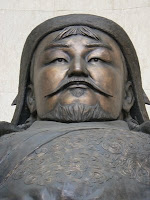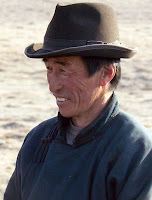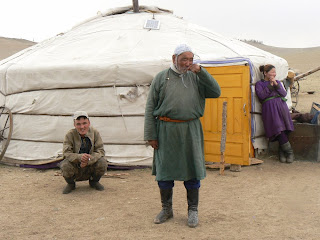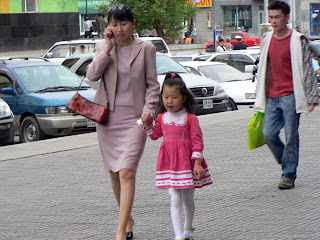Today was our wrap-up session, as half the group leaves for home tomorrow and the rest (including me) goes on a side jaunt to the Gobi Desert. The farewells were bittersweet, but the conclusion of the tour gave us a chance to contemplate Mongolia as the academics we are.
This is a country of surprises, challenges and opportunities. It is all but unknown to most of America, but once changed the entire civilized world and is positioned to have major impact again.

Our trip to the very rural countryside emphasized the contrasts in Mongolia. We were all delighted to return to Ulaanbaatar, which in comparison seems on the cutting edge of modernity. As Brian White noted about the capital, "We are hanging on to civilized life by our fingertips here."
But as the sages among us have noted, all that could change in an eye blink. Mongolia has discovered that its herds of goats graze over a fortune of buried minerals. Will it become the new Kuwait? And if so, will the people benefit or just the leaders and their foreign sponsors?
I may be an optimist, but I think Mongolia may take the "good" path to its future. The sultans of the Middle East historically grabbed the wealth for themselves when they conquered. But Chingaas Khaan had a tra

iling army of accountants who inventoried all the booty in a captured city and then divided it among the Mongolian people.
The Mongolians may let the Chinese, Koreans and Canadians turn the first spades in the mineral boom, but I have no doubt they will hold onto a major share of the total wealth. If the Mongolians are true to their heritage, that means we may see a wealthy country of highly educated and articulate people who keep in the office while the tourists go out to the countryside to see the quaint (and by then subsidized) nomads.
Today was our wrap-up session, as half the group leaves for home tomorrow and the rest (including me) goes on a side jaunt to the Gobi Desert. The farewells were bittersweet, but the conclusion of the tour gave us a chance to contemplate Mongolia as the academics we are.
This is a country of surprises, challenges and opportunities. It is all but unknown to most of America, but once changed the entire civilized world and is positioned to have major impact again.
Our trip to the very rural countryside emphasized the contrasts in Mongolia. We were all delighted to return to Ulaanbaatar, which in comparison seems on the cutting edge of modernity. As Brian White noted about the capital, "We are hanging on to civilized life by our fingertips here."
But as the sages among us have noted, all that could change in an eye blink. Mongolia has discovered that its herds of goats graze over a fortune of buried minerals. Will it become the new Kuwait? And if so, will the people benefit or just the leaders and their foreign sponsors?
I may be an optimist, but I think Mongolia may take the "good" path to its future. The sultans of the Middle East historically grabbed the wealth for themselves when they conquered. But Chingaas Khaan had a trailing army of accountants who inventoried all the booty in a captured city and then divided it among the Mongolian people.
The Mongolians may let the Chinese, Koreans and Canadians turn the first spades in the mineral boom, but I have no doubt they will hold onto a major share of the total wealth. If the Mongolians are true to their heritage, we may see a wealthy country of highly educated and articulate people who keep in the office while the tourists go out to the countryside to see the quaint (and by then subsidized) nomads.
Today was our wrapup session, as half the group leaves for home tomorrow and the rest (including me) goes on a side jaunt to the Gobi Desert. The farewells were bittersweet, but
 Mongolia, I just spent three days in Boston. Like the Sceptered Isle for which it is named, New England practically glows in its lushness (I think mere politics kept it from being New Ireland.)
Mongolia, I just spent three days in Boston. Like the Sceptered Isle for which it is named, New England practically glows in its lushness (I think mere politics kept it from being New Ireland.)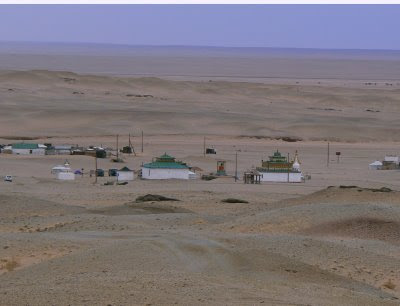 f surrounding hills. I had a friend, however, who had been terrified by a trip to my native West. Those mountains, he said, loomed over him like mountains.
f surrounding hills. I had a friend, however, who had been terrified by a trip to my native West. Those mountains, he said, loomed over him like mountains.